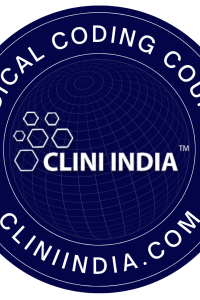
Course Brief
Medical coding is a crucial aspect of healthcare administration and plays a vital role in the healthcare industry. It involves the transformation of healthcare diagnoses, procedures, medical services, and equipment into universal alphanumeric codes. These codes are used for various purposes, including billing, insurance claims, medical research, and healthcare analytics. A medical coding course typically provides training and education in this field.
Here’s an overview of what you might expect from a medical coding course:
- Introduction to Medical Coding: The course often begins with an introduction to the field of medical coding, its importance, and its role in healthcare management.
- Medical Terminology: Students learn medical terminology, anatomy, and physiology to understand the language used in healthcare settings. This knowledge is essential for accurate coding.
- Medical Coding Systems: Students are introduced to various coding systems, with the two most common being:
- ICD-10-CM (International Classification of Diseases, 10th Edition, Clinical Modification): Used to code diagnoses and conditions.
- CPT (Current Procedural Terminology): Used to code medical procedures and services.
- Healthcare Law and Regulations: Understanding the legal and regulatory aspects of medical coding is crucial, as errors can lead to financial penalties and legal consequences.
- Coding Guidelines: Students learn the specific coding guidelines and principles that apply to different code sets. This includes understanding when to use specific codes and modifiers.
- Practice Exercises: Practical exercises are a significant part of the training. These exercises may include coding actual medical records and cases to apply what has been learned.
- Medical Billing: Some courses also cover medical billing, which is closely related to medical coding. This includes understanding insurance claims, billing software, and the revenue cycle.
- Health Information Systems: Students may be introduced to electronic health records (EHRs) and health information management systems, as these technologies are integral to the modern healthcare industry.
- Certification Preparation: Many medical coding courses prepare students for certification exams offered by organizations like the American Academy of Professional Coders (AAPC) or the American Health Information Management Association (AHIMA). Becoming a certified coder can enhance job prospects and earning potential.
- Ethical and Professional Considerations: Students are educated on the ethical aspects of medical coding, including maintaining patient confidentiality and adhering to professional standards.
- Practical Experience: Some programs offer internships or practical experience opportunities where students can gain hands-on experience in coding in real healthcare settings.
- Continuing Education: Medical coding is a dynamic field, and courses may emphasize the importance of ongoing learning to keep up with updates and changes in coding systems.
The duration and depth of a medical coding course can vary. Some programs may offer short-term certificates, while others provide more extensive associate or bachelor’s degree programs in health information management, with a focus on medical coding. It’s important to choose a course that aligns with your career goals and the level of expertise you aim to achieve in medical coding.
This 2-month Medical Coding course training delivered on alternate days typically spans approximately 25 to 30 sessions. The schedule may vary depending on the leaves and holidays in particular session, here’s a general outline of what a typical training schedule might look like:
Week 1-2: Introduction to Medical Coding
- Session 1: Introduction to the course and medical coding
- Session 2: Medical terminology basics
- Session 3: Introduction to ICD-10-CM coding
- Session 4: Practical exercises and coding guidelines
- Session 5: Overview of CPT coding
- Session 6: Practical exercises in CPT coding
Week 3-4: Advanced ICD-10-CM Coding
- Session 7: Detailed ICD-10-CM coding guidelines
- Session 8: Advanced coding exercises and case studies
- Session 9: Special coding scenarios (e.g., obstetrics, pediatrics)
- Session 10: ICD-10-CM certification preparation
Week 5-6: Advanced CPT Coding and Medical Billing
- Session 11: Advanced CPT coding scenarios
- Session 12: Practical exercises in medical billing
- Session 13: Health information systems and EHRs
- Session 14: Legal and ethical considerations in medical coding
- Session 15: Preparing for medical coding certification exams
Week 7-8: Practical Experience and Certification
- Session 16: Mock certification exams and review
- Session 17: Practical experience, internships, or case studies
- Session 18: Final review and certification exam preparation
In this schedule, sessions are held on alternate days, allowing students to have time for self-study, practice, and review between sessions. The course typically covers the essential aspects of medical coding, including ICD-10-CM, CPT, medical terminology, legal and ethical considerations, and certification preparation. The final weeks of the program focus on practical experience and readiness for certification exams.
Keep in mind that the exact schedule may vary from one program to another, and the content covered may be adjusted based on the specific curriculum of the course. Additionally, the number of sessions per week and the duration of each session can vary, so it’s important to check with the educational institution offering the course for specific details and any prerequisites for enrollment.


















